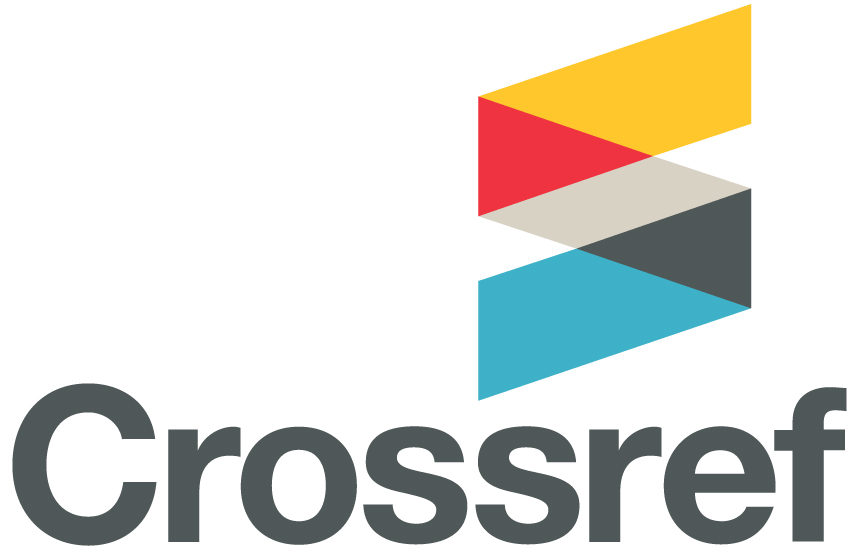«LAS ACCIONES MÁS BELLAS Y EXCELENTES»: GYMNASION HELENÍSTICO EN TIEMPOS DE ADVERSIDAD POLÍTICA (SIGLO II A.C.)
DOI:
https://doi.org/10.53382/issn.0719-9902.37Palabras clave:
epigrafía, estela, gymnasion, mundo helenístico, polisResumen
El presente artículo reúne y traduce una serie de inscripciones griegas que permiten presentar y profundizar los roles e importancia de la institución del gymnasion durante el violento siglo II a.C. A lo largo de este período, el mundo helenístico y su marco de vida institucional sufrieron enormes crisis, marcadas estas por las amenazas crónicas de la piratería e incursiones galatas y tracias, guerras y rebeliones. Gracias a la existencia de documentación epigráfica, es posible constatar que esta institución, gracias a su consolidado compendio educativo atlético, intelectual, ideológico y militar, fue primordial en mantener y adaptar el denso entramado cívico de la polis helenística ante las enormes adversidades de un siglo crítico en entender la transición, desde el final de los inestables conflictos helenísticos, hacia el poder hegemónico romano.
Referencias
Mundo helenístico y siglo II a.C.
Astin, A.E., Walbank, F.W., Frederiksen, M.W., Ogilvie, R.M. (Eds.) 1989: Cambridge Ancient History, 2º edition, Vol. VIII, Rome and the Mediterranean to 133 B.C.
Boulay, Thibaut, 2014: Arès dans la cité: les poleis et la guerre dans l’Asie Mineure hellénistique, Pisa-Roma.
Brélaz, Cédric 2005: La sécurité publique en Asie Mineure sous le Principat (Ier-IIIème s. ap. J.-C.). Institutions municipales et institutions impériales dans l’Orient Romain, Bâle.
Eckstein, Arthur M. 2008: Rome Enters the Greek East: From Anarchy to Hierarchy in the Hellenistic Mediterranean, 230-170 B.C., Malden-Oxford-Victoria.
Erskine, A. 2003: A Companion to the Hellenistic World, Malden-Oxford-Victoria.
Ferrary, Jean-Louis 1988: Philhellénisme et impérialisme. Aspects idéologiques de la conquête romaine du monde hellénistique, Rome.
Gauthier, Philippe 1985: Les cités grecques et leurs bienfaiteurs (IVe s.-Ier siècle av. J.C.). Contribution à histoire des institutions, París.
Gruen, Erich S. 1984: The Hellenistic World and the Coming of Rome, Berkeley-Los Angeles-London.
Sartre, Maurice 1995: L’Asie Mineure et l’Anatolie d’Alexandre à Dioclétien (IVe s. av. J.-C./ III ap. J.C.), Paris.
Epigrafía griega y gymnasion helenístico
Chankowski, Andrzej J. 2010: L'Éphébie hellénistique: étude d'une institution civique dans les cités grecques des îles de la Mer Égée et de l'Asie mineure, Bruxelles.
Crowther, Nigel B. 1991: «Euexia, Eutaxia, Philoponia: Three Contests of the Greek Gymnasium», ZPE 85, pp. 301-4.
D’Amore, Lucia 2007: «Gimnasio e difesa civica nelle “poleis” d'Asia Minore (IV-I sec. A.C.)», REA 109, 1, pp. 147-173.
Delorme, Jean 1960: Gymnasion, étude sur les monuments consacrés á l’éducation en Grèce hellènistique, Paris.
Dreyer, Boris 2004: «Die Neoi im hellenistischen Gymnasio», in Kah, D., Scholz, P. (eds.), Das hellenistische Gymnasion, Berlin, pp. 211-236.
Kah, Daniel y Scholz, Peter 2018: Das hellenistische Gymnasion, Berlin.
Legras, Bernard 2008: «Violence ou douceur: Les normes éducatives dans les sociétés grecque et romaine», Histoire de l’éducation 118, pp. 11-34.
McLean, B. H. 2002: An introdution to Greek Epigraphy of the Hellenistic and Roman Periods from Alexander the Great down to the Reign of Constantine (323 B.C. – AD. 227)
Marrou, Henri-Irénée 1948: Histoire de l'éducation dans l'antiquité, Paris.
Préaux, Claire 1988: Le Monde hellénistique, Paris.
Prieto, Juan P. 2021: «Gimnasio, paideia y ciudadanía helenística: una propuesta para el estudio de la educación griega postclásica desde Latinoamérica», Grecorromana III, pp. 67-97.
Rhodes, P. J., Lewis, D.M. 1997: The Decrees of the Greek States, Oxford.
Trombetti, Catia 2013: Il ginnasio greco. Genesi, topografia e culti dei luoghi della paideia, Oxford.
Inscripciones específicas
Adak, Mustafa, Thonemann, Peter 2022: Teos and Abdera. Two Cities in Peace and War, Oxford.
AE (2000) = L’Année épigraphique 2000 (2003), no. 1383 (pp. 538-539).
Austin, Michel, 2006: The Hellenistic World from Alexander to the Roman conquest, Cambridge-New York-Melbourne.
Corriger, Pierre-Philippe 2015: La loi gimnasiarchique de Béroia. Synthèse de son apport à l’histoire institutionnelle et culturelle hellénistique, Thèse (sous la direction de Mr. Denis Rousset).
Curty, Olivier, 2015: Gymnasiarchika. Recueil et analyse des inscriptions de l’époque hellénistique en l’honneur des gymnasiarques, Paris.
Gauthier, Philippe 1996, «Bienfaiteurs du gymnase au Létôon de Xanthos», REG 109, 1-34.
Gauthier, Philippe y Hatzopoulos, Miltiades V. 1993: La loi gymnasiarchique de Beroia, Athènes. Gauthier, Philippe 2011: «Notes sur le rôle du gymnase dans les cités hellénistiques», en Rousset, D. (ed.), Études d’histoire et d’institutions grecques. Choix d’écrits, Genève, pp. 531- 550. Giovannini, Adalberto 2004: «L’éducation physique des citoyens macédoniens selon la loi gymnasiarchique de Béroia», in Cataldi, S. (ed.), Poleis e politeiai, Allessandria, pp. 473-490.Moretti, L. 1982, «Sulla legge gimnasiarchica di Berea», Rivista di filología e di istruzione classica 110, pp. 45-63. Cormack, J. M. R. 1977, «The gymnasiarchical Law of Beroea», Ancient Macedonia II, pp.139-50. Hatzopoulos, Miltiades V. 2004, «Quaestiones macedonicae: Lois, décrets et épistates dans les cités macédoniennes», TEKMHPIA, pp. 28-37
Habicht, Christian 1976: «Ehrung eines thesalischen Politikers in Athen (IG II2 933 + Hesperia 29, 1960, 76 nr. 154», ZPE 20, pp. 193-199.
Habicht, Christian 2006 [1995]: Athènes hellénistique. Histoire de la cité d’Alexandre le Grand à Marc Antoine (traduit de l’allemande par Martin et Denis Knoepfler), Paris.
Ma, John 1996: Antiochos III and the Cities of Western Asia Minor, Oxford.
Marek, Christian 1997, «Teos und Abdera nach dem Dritten Makedonischen Krieg: eine neue Ehreninschrift für den Demos von Teos», Tyche, 12, pp. 169-177.
Robert, L et L. 1989: Claros I. Décrets hellénistiques, fasc.1, Paris
SEG = Supplementum Epigraphicum Graecum. Vols. 1-11, ed. Jacob E. Hondius, Leiden 1923-1954. Vols. 12-25, ed. Arthur G. Woodhead. Leiden 1955-1971. Vols. 26-41, eds. Henry W. Pleket and Ronald S. Stroud. Amsterdam 1979-1994. Vols. 42-44, eds. Henry W. Pleket, Ronald S. Stroud and Johan H.M. Strubbe. Amsterdam 1995-1997. Vols. 45-49, eds. Henry W. Pleket, Ronald S. Stroud, Angelos Chaniotis and Johan H.M. Strubbe. Amsterdam 1998-2002. Vols. 50- , eds. Angelos Chaniotis, Ronald S. Stroud and Johan H.M. Strubbe. Amsterdam 2003- .
Strubbe, Johan H. M. 2004, «Cultic honours for benefactors in the cities of Asia Minor», en De Ligt, L., Hemelrijk, E. A., Singor, H.W. (Eds.), Roman rule and civic life: local perspectives: proceedings of the Fourth Workshop of the International Network Impact of Empire (Roman Empire, c. 200 B.C. – A.D. 476), Leiden, June 25-28 2003, Amsterdam, pp. 315-330.
Tziafalias, Athanasios, Helly, Bruno 2007: «Décrets inédits de Larissa (3)», BCH 131.1, pp. 421-474.
Descargas
Publicado
Número
Sección
Licencia
Derechos de autor 2022 Grecorromana. Revista Chilena de Estudios Clásicos

Esta obra está bajo una licencia internacional Creative Commons Atribución-NoComercial-SinDerivadas 4.0.













